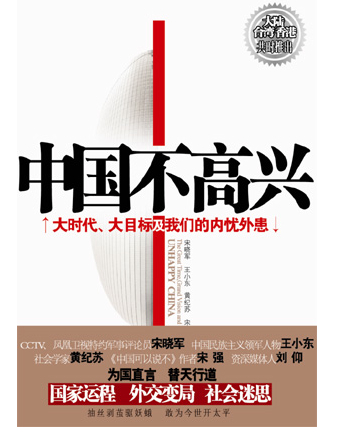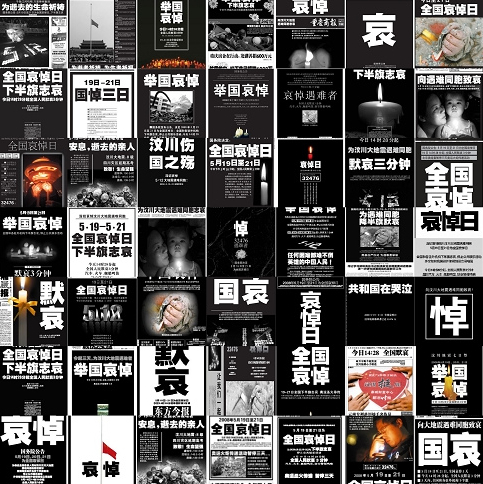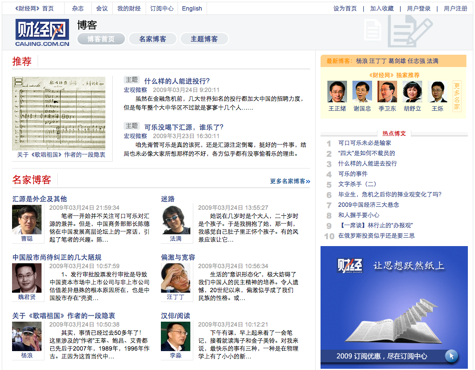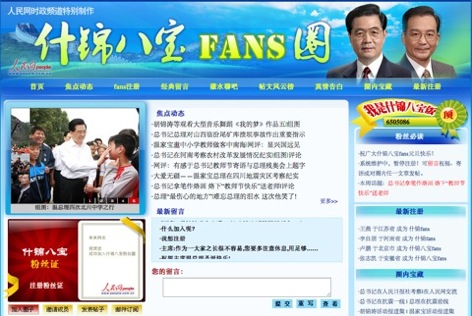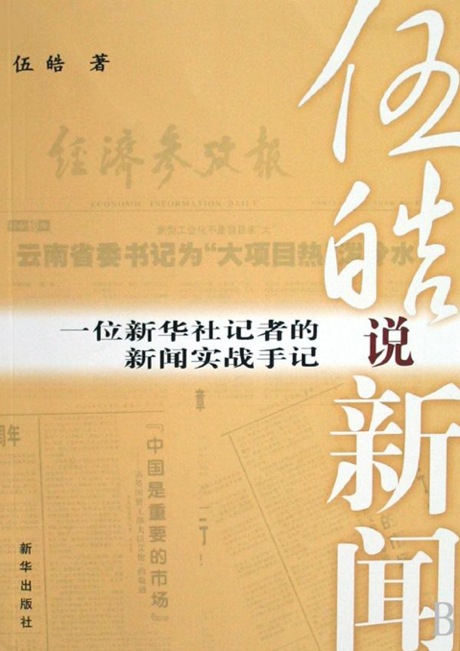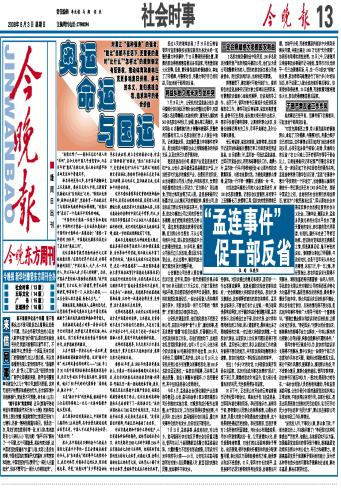Unhappy China, and why it is cause for unhappiness
By David Bandurski — Unhappy China (中国不高兴), a now best-selling book by several Chinese academics arguing in Darwinian terms that China should carve out for itself a pre-eminent role in world affairs, has been the focus of much coverage outside China, and of fierce debate within China. [Homepage Image: A recent issue of Shanghai’s Xinmin Weekly magazine deals with Unhappy China, its significance and its underlying commercial motivations.]
Some Chinese scholars and journalists have expressed concern about Unhappy China‘s pugnacious and even jingoistic tone. The following are two responses to the book. The first is an editorial by Nanjing professor Jing Kaixuan (景凯旋), which appeared in a recent issue of Southern Metropolis Daily; The second is an interview with Shanghai scholar Xiao Gongqin (萧功秦), part of coverage of the book by Shanghai’s Xinmin Weekly.
[ABOVE: Unhappy China, written by Wang Xiaodong, Liu Yang, Song Qiang, Huang Jisu, and Song Xiaojun, has captured the imagination of many Chinese, and concerned others.]
Jing Kaixuan begins his critique of Unhappy China against a backdrop of the myriad domestic issues with which China must contend — a not-so-subtle suggestion that China has plenty of its own concerns, and does not need to strike a confrontational tone internationally. He also invokes Hu Jintao’s term “boat-rocking,” or zhe teng (折腾), suggesting the path marked by the book’s authors is a dangerous loss of focus on the essentials.
“‘Unhappy China’ is All for Show”
By Jing Kaixuan (景凯旋)
Southern Metropolis Daily
March 31, 2009
PG A31
When I first heard about the book Unhappy China, I thought it was probably about how laid-off workers were unhappy, or about how peasants who had lost their land were unhappy. Maybe it was about how college graduates searching for work were unhappy, about how stock market investors were unhappy, or about how victims of the poisonous milk powder scandal were unhappy. [This would make sense], because the actual expression of such unhappinesses is a mark of the progress China has made. Instead, the book’s authors cast their sights much farther afield for the source of China’s unhappiness. They talk about the collective anger of Chinese toward Western nations, and say that Chinese anger demands the emergence of a group of heroes to “lead our people to successfully control and use more resources, ridding [the world of] of bullies and bringing peace to good people.”
No sooner do we drop our guard than we find others speaking once again on our behalf. But I wonder, if this is really about an invasion by foreign enemies, whether we shouldn’t be furious rather than merely “unhappy.” Relationships between nations are not like romantic relationships, which might demand a bit of petulance and coquettishness. If this [issue the authors are talking about] indeed amounts to an international dispute, it should be a matter for diplomatic negotiation to mutual benefit, not something handled with this sort of bluffing and spitting nationalism. When I read an interview with the authors at Sina.com, I found that the whole thing surged with naked Darwinism. The world works by the laws of the jungle, and if Western nations are insolently hegemonic, well then, we should behave like that too. China, therefore, must define its major objective as “first, to get rid of the bullies and bring peace to good people and, second, to control more resources than China currently has in order to bring blessings to all the people of the world.” Even Hitler’s old slogan about “using the swords of Germany to gain lands for the ploughs of Germany” was dragged out and given a new face with the Chinese term “conducting business with a sword in hand” (持剑经商).
Other than these [sentiments], I detect no other basic concepts in the authors’ work . . . In the words of one of the authors, a former author of China Can Say No, Song Qiang (宋强): “Saying ‘no’ expresses the idea that ‘China just wants to govern itself,’ while ‘unhappiness’ expresses the idea that ‘China is able to lead the world.'” If you want to rule this world, though, you must first suppose China already possesses both super powers and lofty ambitions in a number of [strategic] areas. Clearly, the “unhappy” authors don’t see things this way — they believe China can already lead the world, and they object to the idea of “soft power.” The net result is that they ring empty when they talk about China’s internal affairs, and they come off as falsely proud when they talk about foreign affairs. Moreover, realizing their ultimate goal of overthrowing the global capitalist structure would mean not just a “qualified break” with the West, but could only be accomplished through [what they call] the “liberation of the whole world.”
These authors hail from neither the left nor the right. Rather, they are modern proponents of realism . . . thinking about problems only from the standpoint of “power,” hoping that some day the politicians will offer their good graces. In the pre-Qin, there was a school called the “political strategists” (纵横家), and unlike the Confucians and Moists, they subscribed to no clear value concepts. They spent all of their time stumping for this or that cause, using their tongues as weapons, maneuvering about, always changing sides, empty of knowledge but full of tactics. But the political strategists were at least able to size up the situation and to come up with positions to argue . . . In this way, they were quite unlike our “unhappy” authors, who disregard all facts and all logic and sink into their own fantasies, saying what they please without presenting an argument, subjecting themselves to fits of conspiracy theory, and remaining all the time entirely amused by their own boat-rocking (“zhe teng”/折腾) . . .
I hear that the book is selling well, and that it has caught the attention of the Western media — perhaps this is what they mean by a “qualified break.” Generally, I don’t like to speculate about others’ motivations in writing this or that book, as this is something you can never be clear about. But [Phoenix TV correspondent] Luqiu Luwei (闾丘露薇) has revealed that: “On the day it was published, one of the books authors told me that this was a kind of method of (speculation) (“是一种(炒作)手法”), to publish a provocative book and then bandy it about. Having written this commentary up to this point, I confess I’m beginning to feel a bit thick — expostulating with such seriousness about [a book that is little more than] a circus of patriotism with its eye on the bottom line.
The writer is a professor at Nanjing University.
The following is a partial translation of an interview by Xinmin Weekly with Shanghai scholar Xiao Gongqin (萧功秦):
“Xiao Gongqin: I Oppose the Nationalism of False Pride — A Criticism of Unhappy China”
On March 27, 2009, Xiao Gongqin, a professor of history at Shanghai Normal University, agreed to an interview with Xinmin Weekly at his Shanghai residence.
Xiao Gongqin was born in Shaanxi Province, and his ancestral home is Hunan. This well-known scholar, who in the 1980s became synonymous with theories of “neo-authoritarianism,” has for many years researched contemporary political developments in China, the history of modern Chinese ideas and culture, and the political history of China in the 20th century. A few years ago, Xiao Gongqin wrote a piece entitled, “Why I Oppose Radical Nationalism” (为什么我反对激进民族主义), which was broadly influential, and he has been a shrewd observer of the latest nationalist currents.
There is no need for us to “manufacture” enemies
Xinmin Weekly: Lately, the book Unhappy China has been the source of much debate. What are your thoughts?
Xiao Gongqin: Over the last few days I’ve gone online and checked out pages dealing with Unhappy China, and in the last few weeks the number of pages dealing with it have surpassed two million, so clearly this book has had a substantial social impact. There is no question that what the authors of this book are promoting is a high-pitched, vainly arrogant and radical form of nationalism. One of the book’s authors, Wang Xiaodong (王小东), has been a friend of mine for many years, and many of the liberal intellectuals singled out for criticism in the book are also friends. China’s intellectual culture has, it seems, already entered a period of diversity, and although I do not agree with many of the views expressed in Unhappy China, as one among many voices in this developing culture, its existence, and its dialogue with differing viewpoints, can at least serve to catalyze a clash of ideas. What is most terrible, for any society or any people, is homogeneity of thought. The balancing and clashing of varying voices, whether liberalism or nationalism, cultural protectionism, etcetera, can only have a positive outcome for the enriching of our people’s capacity for thought. People holding different views should have an attitude of tolerance.
The publication of this book has created ripples, and there are many reasons why it has had such an influence, including its jarring title and its clever commercial strategy or “build up.” But one reason is certain, and that is because it seeks to answer the question of modern China’s relationship with other peoples of the world. This question tugs at people’s hearts because 30 years of reform have made the Chinese people stronger, and so after a century of shame Chinese people face the question of how to re-define ourselves.
XW: One of the book’s authors, Song Qiang (宋强), has said that he prefers the term “new patriotism” (新爱国主义) to describe the popular sentiment of nationalism [today]. What are your thoughts?
Xiao Gongqin: I’ve long held the view, even before this book came out, that China’s nationalism was marked by a reactive quality, that it was goaded by a sense of tragedy and shame over the Chinese experience in the last century. This form of reactive nationalism could be stirred up, and so if these stimuli from the outside world vanished, this sort of nationalism would fade as well. Look, for example, at the May 8, 1999, incident [in which the U.S. bombed the Chinese embassy in Belgrade], and the 2001 collision of a Chinese fighter jet and an American spy plane. Both could be seen as examples of this reactive form of nationalism.
Nevertheless, the form of nationalism represented in this book can no longer be defined in these original terms. Overall speaking, the attitude of Western countries toward China is warmer now than it has been in the past, particularly in the midst of the economic crisis, as the West has looked to China . . . hoping for friendly cooperation, and peaceful development has already become a general consensus among nations. Under this situation, the nationalism as represented by Unhappy China, which persists in striking this menacing tone, cannot be characterized as reactive. I believe that for some time to come this nationalist wave as epitomized by Unhappy China will continue to exist, and foreigners will have to learn to come to terms with this non-reactive form of Chinese nationalism.
What is the character of this new nationalism? Its crucial point is the positing by necessity of an “external enemy,” and this is seen by the authors as a basic condition of China’s existence and development. One of the authors, Wang Xiaodong (王小东) holds precisely this. He believes that, “any species, if it is not challenged by its external environment, will certainly degenerate.” He finds a root for this new nationalism in social biology. He believes also that China has at present no “selective pressures,” so “everyone believes that things are fine, and that its OK to muddle along, and this makes degeneration unavoidable.” Particularly interesting is this line: “America too faces this problem, and so it actively goes in search of enemies.” I’m not sure, but it seems Brother Xiaodong is actually suggesting that in order for our people to grow strong, China must, lacking “selective pressures,” go and search for “selective pressures.”
I think the logic here can be summed up like this: If external pressures are the necessary condition of the development and existence of a people, if they then lack pressures, they must as a matter of course manufacture these pressures. If this is the argument, then it is both fearsome and dangerous. I really, really hope this is not what the authors mean, but what of the “angry youth” who are more radical than they are? They can certainly seize upon this logic . . . It is in this theoretical logic of nationalism that I see something frightful and dangerous. It does not lie too far, in fact, from bullying racism and jingoism.
More than ten years ago, Xiaodong applied himself to promoting nationalism, and I don’t question his academic earnestness, but if a thinker finds himself invested in a theory fraught with danger, and this framework of thought once again drags into peril a people who have only just emerged from a century of pain and who have the opportunity to thrive, that is poor timing.
Perhaps the authors will think I’ve made my case too strongly, that this is not what they intend, that they only want to urge the Chinese people not to grow idle. But what is crucial to realize is that this form of nationalism is by its own logic a Pandora’s box that will release monsters that cannot be put back.
FURTHER READING:
“Book Stokes Nationalism in China,” Jason Dean, Wall Street Journal, March 30, 2009
“China is Unhappy: censors take hands-off approach to bestseller,” Jane Macartney, The Times, March 26, 2009
“A new book reveals why China is unhappy,” Austin Ramzy, Time.com, March 20, 2009
“‘Unhappy China’ bestseller claims Beijing should ‘lead the world’,” Malcolm Moore, The Telegraph, March 29, 2009
[Posted by David Bandurski, April 2, 2009, 11:34am HK]
